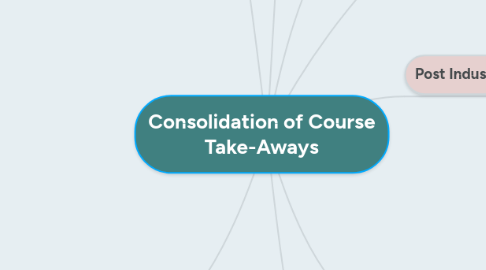
1. Teaching in the 21st Century
1.1. reflective
1.2. student centred
1.3. inquiry based learning
1.4. problem based learning
1.5. planning
1.6. self-regulated learning
1.7. classroom management
1.7.1. students help make expectations and consequences
1.7.1.1. ownership
1.7.1.2. responsibility
1.7.2. proximity
1.7.3. student names
1.7.4. "the look"
1.7.5. ignore
1.7.6. signals
1.7.7. take a breath before reacting
1.7.8. community
1.7.9. good relations with parents
1.7.10. communication
1.7.11. positive behaviour reinforcement
1.7.12. culturally relevant instruction
1.7.13. tribes
1.7.14. 80-20 prevention-consequences
1.8. Diverse Learners
1.8.1. ADHD
1.8.1.1. 8-10% lower math and reading scores
1.8.1.2. differences in brain
1.8.1.3. process information more slowly
1.8.1.4. how to help?
1.8.1.4.1. reduce cognitive load of academic tasks
1.8.1.4.2. avoid overloading working memory
1.8.1.4.3. modified instruction
1.8.1.4.4. on-task self-monitoring checklist
1.8.2. establish high standards for everyone
1.8.3. caring relationships
1.8.4. parent and community involvement
1.8.5. Learning Disorders
1.8.5.1. implement strategies
1.8.5.1.1. 1. develop and activate background knowledge and skills
1.8.5.1.2. 2. discuss and introduce strategy
1.8.5.1.3. 3. model strategy
1.8.5.1.4. 4. memorize strategy
1.8.5.1.5. 5. support strategy
1.8.5.1.6. 6. independent practise
1.8.6. FNMI
1.8.6.1. oral traditions
1.8.6.2. written tests may not show their knowledge
1.8.7. support home languages
1.8.8. many stories, not single story
1.9. standardized testing
1.9.1. does not allow for linguistic and cultural differences
1.9.2. teaching to test
1.9.3. student disengagement
1.9.4. does not adequately assess 21st century sckills
1.9.4.1. creativity
1.9.4.2. technological ability
1.9.4.3. problem solving
1.9.4.4. critical thinking
1.9.5. allows for comparison
1.9.6. shows weaknesses and strengths
1.9.7. accountability
1.9.8. focuses on memory and knowledge acquisition rather than application
2. Learning and Development
2.1. Teacher x Topic x Setting x Student
2.2. predictors of Success
2.2.1. literacy skills
2.2.2. numeracy skills
2.2.3. SES
2.2.3.1. greatest impact on scholastic achievement
2.2.4. parenting style affects learning
2.3. constructivism
2.4. piaget
2.4.1. schemes
2.4.2. adaptation
2.5. vygotsky
2.5.1. zone of proximal development
2.5.2. scaffolding
2.6. growth mindset
2.6.1. "not yet"
2.6.2. can help create equity
2.7. language development
2.7.1. humans are hard wired to learn language at a certain time and a certain way (Edmunds, 57)
2.8. psychosocial development
2.8.1. Erik son Eight Stages
3. Sense of Community
3.1. inclusion
3.1.1. variety of instructional methods
3.1.2. differentiated instruction
3.1.3. school wide
4. critical thinking
5. resilient children
5.1. optimistic
5.2. sense of competence
5.3. connected
5.4. motivated to learn
5.5. self-discipline
5.6. self-efficacy
6. Post Industrial-Age Goals of Education
6.1. adaptability
6.2. entrepreneurialism
6.3. communication
6.4. curiosity
6.4.1. mistakes are expected
6.4.2. iterative process
6.5. imagination
6.6. collaboration
6.6.1. cooperation over isolation
